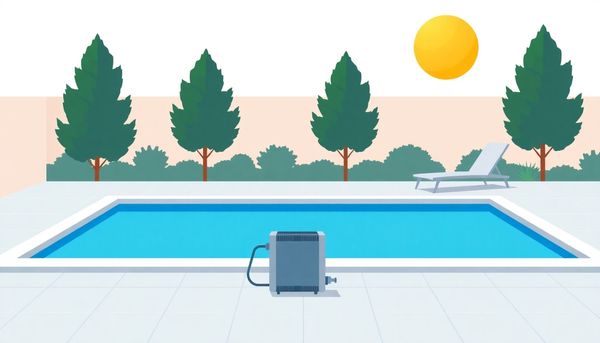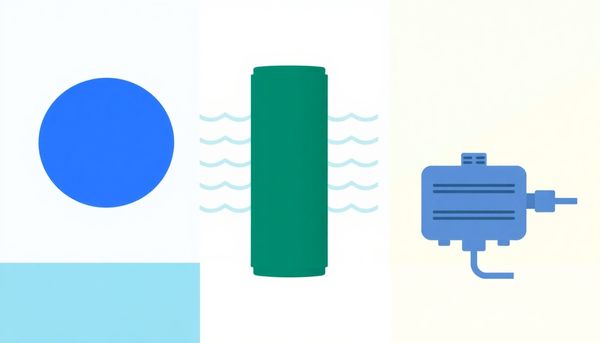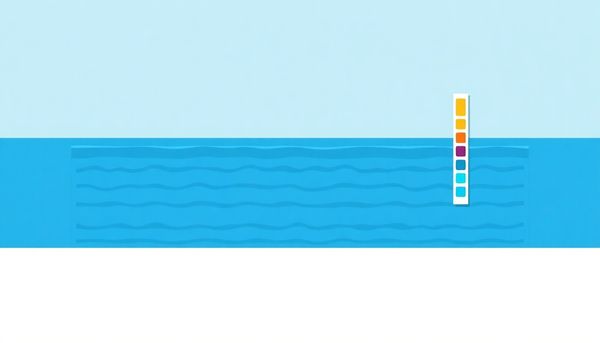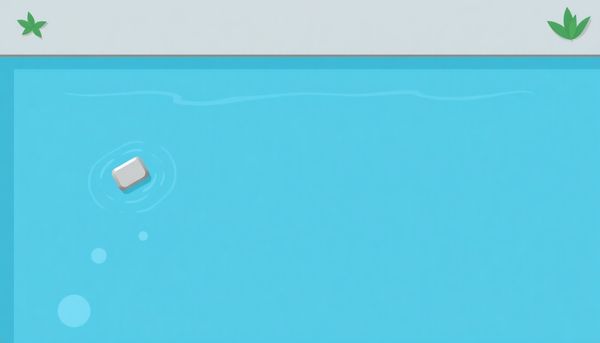Effortless Pool Care: Discover the Benefits of Automatic Chlorinators
July 12th, 2024
July 12th, 2024
Stepping into your backyard oasis, the last thing you want to think about is juggling chlorine tablets or testing pH levels. Yet, for pool owners, the maintenance of a sparkling blue escape often demands attention. Enter the world of automatic pool chlorinators, a modern solution promising to ease the burdens of pool care. These devices, often tucked discreetly into a pool's circulation system, work tirelessly to maintain optimal chlorine levels, ensuring that your pool is always swim-ready.
When I first considered installing an automatic chlorinator for my own pool, I was skeptical. The idea of entrusting technology with the delicate balance of pool chemistry seemed both convenient and risky. However, after witnessing their efficiency during a particularly busy summer season, the benefits were undeniable. Automatic chlorinators draw upon a steady supply of chlorine and dispense it evenly based on the pool's needs, effectively reducing the manual checks and constant adjustments.
The heart of their charm lies in their simplicity. With various options ranging from traditional tablet feeders to advanced saltwater systems, these devices cater to different preferences and pool types. They promise not just ease but also a consistent swimming experience, free from the anxieties of over-chlorination or lapses in hygiene.
As we delve deeper into the mechanics and merits of these chlorinators, one must ask: are they worth the investment? Understanding their operation and assessing their value is key to determining their place in your pool care routine.

Keeping a pool sparkling and inviting requires a vigilant eye on chlorine levels, and that’s where automatic chlorinators shine. They take the guesswork out of pool maintenance by ensuring your water stays at the perfect level of cleanliness with minimal effort. Imagine lounging by the pool, a book in one hand and a cold drink in the other, without the constant worry of monitoring chlorine levels. That's the lifestyle a chlorinator can offer.
These devices simplify pool upkeep by dispensing chlorine at a consistent rate, effectively maintaining balanced chemistry in your water. Say goodbye to the hassle of manually measuring and adding chemicals, and hello to efficiency. Once installed, these chlorinators seamlessly integrate into your pool’s existing system, providing a steady stream of sanitation while you enjoy other summer pleasures.
Economically speaking, automatic chlorinators are a wise investment. By extending the life of your pool equipment and reducing the need for frequent chemical purchases, they save money over time. Moreover, they offer peace of mind, especially when you're away from home, allowing you to travel knowing your pool is well-cared-for.
In essence, an automatic chlorinator not only enhances the ease of pool maintenance but also enriches the overall swimming experience, letting you focus on the fun rather than the fuss. Whether you're a new pool owner or a seasoned one, the convenience and reliability of these devices make them a worthy addition to any backyard oasis.
Ensuring that your pool maintains the right balance of chlorine can feel like juggling plates, especially when life gets hectic. Enter the automatic pool chlorinator, a device designed to seamlessly integrate with your pool system and guarantee an even distribution of chlorine. By automating this crucial task, it not only saves you time but also prevents the common pitfalls of manual chlorination such as uneven distribution and wasted chemicals.
Back when I had my first pool, I remember the constant checking and adjusting, always worrying if I’d added too much or too little chlorine. The water chemistry was like a temperamental friend, unpredictable and demanding. But after installing an automatic chlorinator, those worries were a thing of the past. The chlorinator ensured a consistent flow of chlorine, keeping the pool sparkling clean without any dramas.
These devices are adjustable; you can set the dispensation rate according to your pool’s needs, ensuring it maintains optimal chlorine levels without overdoing it. Moreover, they prevent the mess and hassle of dealing with floating dispensers that often get stuck or skimmer baskets that can damage pool liners. While it does require a bit of an upfront commitment—both financially and in terms of installation—the benefits of a worry-free swim experience are well worth the investment. With an automatic chlorinator, the pool truly becomes a place of relaxation rather than a chore.
Managing a swimming pool can often feel like an intricate dance of balancing chemicals, especially when it comes to maintaining consistent chlorine levels. An automatic pool chlorinator effortlessly steps into this role, offering pool owners a hassle-free solution. By connecting seamlessly to your pool's pump and filter system, these devices introduce chlorine into the water with precision, delivering a steady supply that keeps your pool safe and sparkling all season long.
The beauty of an automatic chlorinator lies in its simplicity. Instead of the constant task of measuring chlorine, adding tablets to skimmers or dispensers, the chlorinator takes care of it all. Just load it up with your choice of chlorine tablets, select the desired chlorine level, and let it work its magic. For someone who travels frequently or simply prefers a low-maintenance pool experience, this can be a game-changer. A dear friend who installed an inline chlorinator last summer found herself spending more time enjoying her pool rather than worrying about its care.
However, it's crucial to remember that while the chlorinator handles day-to-day chlorination, it doesn't completely eliminate maintenance. Initially, you’ll need to experiment with settings to match your pool's specific needs, and periodic checks on chlorine levels are advisable to guarantee optimal performance. Nevertheless, an automatic chlorinator significantly reduces the manual labor involved, proving to be a worthwhile ally in simplifying pool maintenance.
Navigating the world of automatic pool chlorinators can feel like sifting through a sea of choices, but making the right selection is crucial for maintaining a pristine pool. First, you need to decide between an inline or offline model. Inline chlorinators integrate seamlessly into your pool's existing plumbing, offering a robust and sturdy solution. They work best if installed during pool construction or renovation because they require cutting into the PVC pipes. Conversely, offline chlorinators attach externally and are ideal when space is limited or when you want to avoid extensive plumbing modifications.
Consider the size of your pool next. Chlorinators are rated for different capacities, so ensure that the one you choose can handle your pool’s volume—whether that's 10,000 gallons or 40,000 gallons. An undersized chlorinator won't adequately sanitize your pool, leading to murky waters and potentially unsafe conditions.
Brand reputation also plays a vital role. Opt for well-known brands like Hayward, which offer reliable products with accessible replacement parts and strong warranties. This foresight can save you headaches down the line.
Once you've narrowed down your options, think about the type of chlorine tablets you'll use. Most chlorinators are designed for slow-dissolve trichlor tablets, which provide a steady release of chlorine. Remember, mixing different chlorine types can be hazardous, so stick to one type to avoid any unwanted chemical reactions.
Choosing the right chlorinator is an investment in your pool's health, ensuring a sparkling, stress-free swimming season.

Navigating the world of pool chlorinators can feel like stepping into a chemist’s lab, but understanding the different types can significantly ease your pool maintenance routine. Automatic pool chlorinators generally fall into two main categories: inline and offline. Inline chlorinators integrate directly into your pool's plumbing system, serving as a sturdy, reliable option. Their installation involves connecting them to the PVC piping, typically during pool construction, though modifications can be made later if needed. This type is a fantastic choice if you're looking to avoid clutter since it doesn’t require additional tubing.
On the flip side, offline chlorinators offer flexibility for those with limited space in their existing setups. These units connect via a separate line that bypasses other filtration equipment. While they require cutting small holes into your PVC plumbing, this method doesn't necessitate altering your current piping structure. Offline models are ideal for those who might be hesitant about significant plumbing changes or who have more intricate filtration systems.
Choosing the right type hinges on your pool's specific requirements and available space. It’s a bit like choosing between a fast sports car or a versatile SUV—each has its advantages based on your needs. Whether you go inline or offline, both systems efficiently maintain chlorine levels, offering you more time to enjoy your pool rather than worrying about its upkeep.
Balmy afternoons by the pool often come with a hidden chore: maintaining those perfect chlorine levels. Automatic pool chlorinators can transform this task into a breeze. These clever devices dispense the right amount of chlorine consistently, akin to a seasoned barista crafting your favorite coffee just the way you like it. The freedom from daily chemical checks and adjustments is akin to setting your coffee maker to brew just as you wake up.
For anyone who has experienced the frustration of a jammed floating dispenser or has watched helplessly as chlorine tablets slip behind ladder rungs, the benefits of an automatic chlorinator are immediately evident. By plugging into your pool’s existing pump and filter system, it ensures chlorine is evenly dispersed, maintaining clear, inviting waters without constant oversight. The novelty of a summer storm won't send you into a panic about potential algae blooms thanks to its consistent operation.
And while the initial installation may seem daunting, it’s a one-time effort that pays dividends every swim season thereafter. A pool chlorinator becomes the unsung hero, quietly working to ensure every splash is refreshing and safe. Embrace this technology and you’ll soon realize that pool maintenance can be as relaxing as lounging poolside itself.
When choosing between inline and off-line chlorinators, understanding the subtle differences can make a world of difference for your pool maintenance routine. Inline chlorinators integrate seamlessly within your pool’s plumbing system. Placed directly after the filter or heater, these units distribute chlorine to the water as it returns to the pool. This setup not only simplifies the chlorination process but also shields pool equipment from potential corrosion. However, installing an inline chlorinator is often best undertaken during pool construction or renovation, as it requires cutting into PVC piping.
On the flip side, off-line chlorinators offer a flexible alternative, especially when space is limited around your pump and filter system. They connect via small tubes that bypass the direct plumbing line, making them a less invasive option. Off-line models are particularly handy if you lack the room for an inline installation or prefer a less permanent solution. Nonetheless, they necessitate specific conditions: namely, the presence of rigid PVC piping rather than soft hoses, common in above-ground setups.
Both types serve the same primary function—maintaining consistent chlorine levels—but the choice between inline and off-line hinges on your pool’s unique layout and plumbing constraints. Whether you’re retrofitting an existing setup or planning a new pool, these options ensure you find a chlorinator that best fits your needs, keeping your water clean with minimal fuss.
Finding the perfect chlorinator model for your pool can feel like picking out the right pair of shoes—you want something that fits seamlessly and performs well without causing blisters down the line. First, identify the type of pool system you're working with. Inline chlorinators integrate directly into your pool's plumbing and are ideal if you're in the midst of a pool build or renovation. They offer a robust solution by treating water after it’s filtered, thus safeguarding your equipment. However, if space is a concern or you’ve got an established setup, off-line models provide an excellent workaround. These attach via hoses and don’t require major plumbing alterations, making them a feasible option for many.
Consider the size of your pool next. Chlorinators are designed to handle different water volumes, ranging from modest backyard pools to expansive residential oases. Opting for an undersized model will leave your water under-sanitized and prone to algae blooms, while an oversized chlorinator could be an unnecessary expense. Brands like Hayward offer reliable choices and make sourcing parts easier if needed.
Finally, think about the type of chlorine tablets you plan to use. Trichlor tablets are most common, dissolving slowly to offer consistent chlorine levels. Always stick to one type and brand to avoid dangerous chemical reactions. With these considerations in mind, you’ll soon find a chlorinator model that feels like a customized fit for your pool’s needs.

Stepping into the world of pool chlorinators can feel like unlocking a secret passage to effortless pool maintenance. If you’ve ever envied how some pool owners seem perpetually carefree about algae or murky water, the secret often lies in their chlorinator setup. Installing an automatic pool chlorinator can transform your pool care routine, sparing you from the weekly ritual of manually adding chlorine.
To begin, pinpoint whether your pool setup best accommodates an inline or offline model. Both cater to different plumbing configurations. Inline chlorinators are direct inserts into your pool’s plumbing, ideal for those planning a pool from scratch or during a significant overhaul. They’re robust, blending seamlessly into your filtration system. On the other hand, offline chlorinators are the crafty solution for already established pools, connecting via a bypass line, yet requiring less invasive pipe cutting.
Once selected, the installation kicks off with shutting off your pool pump, crucial for safety. With your toolkit ready, and perhaps the backing of a helpful friend, position your chlorinator according to its type. For inline models, you'll cut and secure it snugly between your filter and heater. Offline models involve attaching tubes and fitting adapters into your existing pool layout.
With your chlorinator primed for action, remember, like a new pair of shoes, it needs a break-in period. Start slow, testing your water frequently to fine-tune the chlorine levels. In no time, you’ll find your pool's sparkle maintained effortlessly, letting you enjoy more swim time and less upkeep.
Selecting the ideal chlorinator for your pool involves understanding your pool’s unique demands and the available options. This decision can simplify pool maintenance, ensuring a consistently clean swimming environment. Start by assessing the type of chlorinator that aligns with your pool system. Inline models are integrated directly into your plumbing, offering a seamless solution for those with enough space in their setup. They’re particularly beneficial for larger pools where constant water flow is crucial for even distribution. Off-line chlorinators, on the other hand, are suitable for installations where space is a constraint, as they connect via a separate line.
Consider the size of your pool, as chlorinators are designed to handle different volumes. Imagine owning a 20,000-gallon pool and purchasing a chlorinator that’s only effective for up to 10,000 gallons. It would lead to inadequate sanitation and frequent manual intervention. Hence, choosing a model compatible with your pool's size is paramount. Additionally, opt for a reputable brand, like Hayward, which provides ease of finding replacement parts and usually includes a reliable warranty.
Another crucial aspect is the type of chlorine used. Chlorinators are optimized for slow-dissolving trichlor tablets, ensuring long-lasting effectiveness. Be cautious not to mix different types or brands of chlorine tablets to prevent potential hazardous reactions. Ultimately, picking the right chlorinator can transform pool care from a chore into a straightforward, manageable task, allowing you more time to enjoy your pool.
Ensuring a safe installation of your automatic pool chlorinator can be as crucial as selecting the right model for your needs. Before you embark on the installation journey, don a pair of safety goggles and gloves. These are your first line of defense against the potent chemical fumes and accidental splashes that can occur when handling chlorine tablets.
Begin by turning off your pool pump. This is a vital step to prevent any unintentional flow of water through the system, which could lead to mishaps during installation. Once the pump is silent, slowly release the air pressure from your chlorinator using the air vent, or cautiously remove the cap to avoid a sudden rush of chlorine fumes. Remember, the fumes can be quite strong, so it might help to have a mask on hand.
When adding chlorine tablets, make sure to stick with a single type of tablet from a reliable brand. Mixing different types of chlorine tablets can lead to dangerous chemical reactions, so consistency is key. Once the tablets are in place, secure the lid back on the chlorinator snugly before turning the pump back on. This ensures the system is sealed and ready to maintain your pool’s hygiene.
Regularly check your chlorine levels to confirm that the system functions correctly. With these precautions, your chlorinator will be a safe, efficient ally in keeping your pool pristine, allowing you more time to enjoy the water and less time worrying about chemical levels.
Balancing chlorine levels in your pool can feel like a chemistry experiment gone awry if not handled with care. The magic of an automatic pool chlorinator lies in its ability to dispense chlorine consistently, but setting it right is crucial for maintaining pool health. Start by becoming well-acquainted with your pool's volume since it determines how much chlorine is necessary. Knowing this, you adjust the chlorinator's control valve to match the appropriate dispensation rate.
An initial setup phase is key. Begin on a conservative setting for a few days and test the water. During my first encounter with a chlorinator, I was surprised by how rapidly my pool's chlorine levels shifted. Regular testing in the early stages helped me find the sweet spot, ensuring chlorine remained between the ideal 1 to 3 ppm. It’s also vital to monitor factors like pH and alkalinity to keep the water chemistry balanced.
Consider your pool pump's schedule, too. Chlorine only disperses when the water is flowing, so if the pump is on a timer, be mindful of the correlation with your chlorinator settings. Always prioritize safety: when adding chlorine tablets, turn off the pump, release any air pressure, and don protective gear. These steps ensure not just a sanitized swim but peace of mind, knowing your pool is well-cared for.

Keeping your pool's chlorine levels consistent can feel like a juggling act, especially when you dream of spending less time worrying about maintenance. Automatic pool chlorinators step in as the unsung hero, offering a simple yet effective solution. They ensure that every splash and dive is into water that's perfectly sanitized, without the constant need to measure and manually add chlorine. Unlike the sporadic nature of floating dispensers that can get trapped in tricky spots or skimmers that pose the risk of staining pool liners, chlorinators provide a steady, controlled release of chlorine, maintaining that sweet spot between 1 and 3 ppm.
When my cousin installed an automatic chlorinator last summer, the transformation was evident. No longer did she have to interrupt her weekend plans to check chlorine levels. Instead, her pool became a source of relaxation, not stress. The chlorinator seamlessly integrated with her existing pump and filter system, allowing her the luxury of fine-tuning the chlorine output via a simple dial. It was as if the pool was self-sufficient, quietly taking care of itself every day.
For those worried about the initial adjustment phase, fear not. While it does require a bit of monitoring to dial in the perfect chlorine levels, once set, the chlorinator runs with minimal oversight. So, whether you're hosting a barbecue or lounging with a book, your pool remains inviting, with crystal-clear waters ready to welcome you back.
Installing an automatic chlorinator can transform your pool maintenance routine from a constant chore to an occasional check-in. For those who dread the frequent balancing act of adding chlorine manually, this device offers a sigh of relief. I remember the summer when I realized every time I returned from a weekend trip, my pool's chlorine levels were out of whack. That's when I decided to try an automatic chlorinator, and it was a game-changer.
First, it’s essential to choose between inline and off-line chlorinators based on your pool's setup. If you're working with limited space or a complex pump system, an off-line chlorinator might be your best bet. These connect using a bypass line, avoiding the need to slice into existing plumbing extensively. In contrast, inline chlorinators are more robust and connect directly to the filtration system, but they require a little more finesse during installation.
Once you've picked the right model, installation can vary from straightforward to moderately challenging, depending on your system. Generally, the process involves turning off your pool pump, carefully integrating the chlorinator into the system, and ensuring all connections are secure to prevent leaks. Safety gear like goggles and gloves are crucial to protect against chlorine fumes.
After installation, load your chlorinator with the appropriate chlorine tablets. Start with a conservative setting, and adjust until your pool maintains a steady chlorine level between 1 and 3 ppm. It's a sophisticated yet straightforward solution that keeps your pool ready for a swim without the constant monitoring.
Selecting the ideal chlorinator for your pool can feel a bit like navigating a maze with multiple paths. Each type of chlorinator offers its unique advantages, making the choice largely dependent on your specific pool setup and personal preferences. Inline chlorinators integrate into your existing plumbing, delivering seamless chlorine distribution. They're a sturdy option, typically installed during pool construction, but can be added later with some careful plumbing adjustments. Their direct connection to the filtration system means they work efficiently without taking up extra space.
Meanwhile, off-line chlorinators offer a flexible alternative for those with limited plumbing space. These models connect via a separate line, bypassing the main filtration components, which makes them a lifesaver for setups where an inline model simply won't fit. However, installation requires a bit more finesse since you need to make small modifications to your PVC plumbing.
When my cousin upgraded his pool, he opted for an inline chlorinator because it fit seamlessly with his existing setup. For smaller above-ground pools, though, an off-line version might be more practical due to space constraints. Whichever route you choose, remember the key is ensuring compatibility with your pool's volume and plumbing type. This way, you ensure smooth chlorination and a sparkling clean pool without the hassle of constant manual intervention.
Tuning your automatic pool chlorinator's settings is akin to finding the perfect recipe for your favorite dish. It’s all about the right balance. When I first installed my chlorinator, I realized that simply setting it to the highest level didn't mean a cleaner pool. Instead, I had to consider variables such as pool size, usage, and weather conditions. Each element plays a crucial role in determining the optimal chlorine dispensation rate.
Start by evaluating your pool’s size. A small backyard pool and an Olympic-sized one demand different chlorine levels. For instance, my neighbor's modest pool required less chlorine compared to our community's larger facility. Begin with a lower chlorine setting, around 1 ppm, and monitor the efficacy over a few days. Use a reliable water testing kit to gauge the free chlorine levels, making adjustments as needed.
Another aspect to consider is the frequency of pool use. Active pools, like those swarming with neighborhood kids throughout summer, need higher chlorine settings to maintain cleanliness. Conversely, a seldom-used pool can rely on a slightly reduced rate. Finally, remember the impact of external factors such as rainfall or heat waves, which can alter chlorine demand. By fine-tuning these settings over time, you can ensure your pool remains a sparkling oasis, ready for any impromptu swim party or serene afternoon float.
Finding the perfect chlorinator for your pool can be a game-changer in maintaining crystal-clear water throughout the swimming season. The key is to match the chlorinator with your pool's existing filtration system and volume. Before making a decision, consider whether an inline or offline chlorinator suits your setup better. Inline models integrate seamlessly into the plumbing system, ensuring efficient chlorine dispersion as water returns to the pool. They are robust, but require ample space for installation. If your setup is cramped, an offline chlorinator, which connects using flexible tubing, might be your best bet. Just ensure your plumbing system can accommodate it.
Size matters when it comes to chlorinators. A small one might struggle to sanitize a large pool, leaving you with unsatisfactory chlorine levels. Always check the chlorinator's capacity and ensure it matches your pool's gallonage. For instance, a chlorinator designed for pools up to 10,000 gallons would be insufficient for a 30,000-gallon pool, leading to hygiene issues.
Finally, consider brand reputation. Established names like Hayward aren't just about brand prestige; they offer reliability and easy access to replacement parts if needed. Also, remember to invest in slow-dissolving trichlor tablets that are suited to your chlorinator, as mixing different types can be hazardous. By selecting the right chlorinator, you'll enjoy less fuss, more swim time, and peace of mind.
Chlorinators, the unsung heroes of pool maintenance, come in two main varieties: inline and offline. Each has its own unique approach to keeping your pool sparkling clean, yet both ensure that chlorine is metered out efficiently, saving time and reducing hassle. Inline chlorinators integrate directly into your pool’s plumbing system. Picture them as steadfast gatekeepers, mounted after the filter or heater but before the water returns to the pool. This positioning helps to shield sensitive equipment from the harsh effects of chlorine, thereby prolonging their lifespan.
Off-line chlorinators, on the other hand, take a more laid-back approach. They connect via a separate line that bypasses the rest of the filter system. This setup is particularly advantageous for those with limited space, as it negates the need for extensive pipe cutting. However, it requires you to make small modifications to your PVC plumbing, which might sound daunting but is manageable with a bit of patience.
When deciding between these two types, consider your pool’s existing setup. Inline models tend to offer a more durable solution with fewer parts to worry about, whereas off-line models offer flexibility for those with spatial constraints. Both types are compatible with standard trichlor tablets, ensuring a steady disbursal of chlorine, but remember—these systems only work when the pump is running, so planning and regular checks are essential.
Tackling the installation of a pool chlorinator might feel like venturing into uncharted territory, but with a little patience and attention to detail, you’ll be on your way to a more manageable pool maintenance routine. Before you begin, take note of the type of chlorinator that suits your setup: inline or offline. The inline model integrates directly into your existing plumbing, while the offline version sits adjacent, connected via tubing. Both types require a good understanding of your current filtration system, so a quick review of your pool's manual might come in handy.
Once equipped with the correct chlorinator model, gather all necessary tools, such as PVC cutters, pipe wrenches, and Teflon tape. First, turn off your pool pump to prevent any unwanted water flow. For inline installations, carefully cut the PVC pipe post-filter and fit the chlorinator in place, ensuring a tight seal with the provided fittings. Don’t forget to use Teflon tape on threaded connections to prevent leaks. The offline model, on the other hand, requires drilling into the PVC for a bypass setup—this might be less daunting if you’re not confident cutting main pipes.
After securing everything, load the chlorinator with the correct type of chlorine tablets, ensuring they're compatible with your unit. With the power back on, adjust the control valve to your desired chlorine level, keeping an eye on the pool's water chemistry in the following days. In no time, you'll enjoy the satisfaction of a well-maintained pool with minimal effort, allowing more time for leisurely swims and poolside relaxation.

This article provided insights into maintaining your pool. Start your pool care journey today!
Want to become a pool maintenance expert? Our free Pool School course covers everything you need to know about pool care. From basic maintenance to advanced troubleshooting, you'll learn how to:
Join over 10,000 pool owners who have already transformed their pool care routine. Get started with our free Pool School course today!